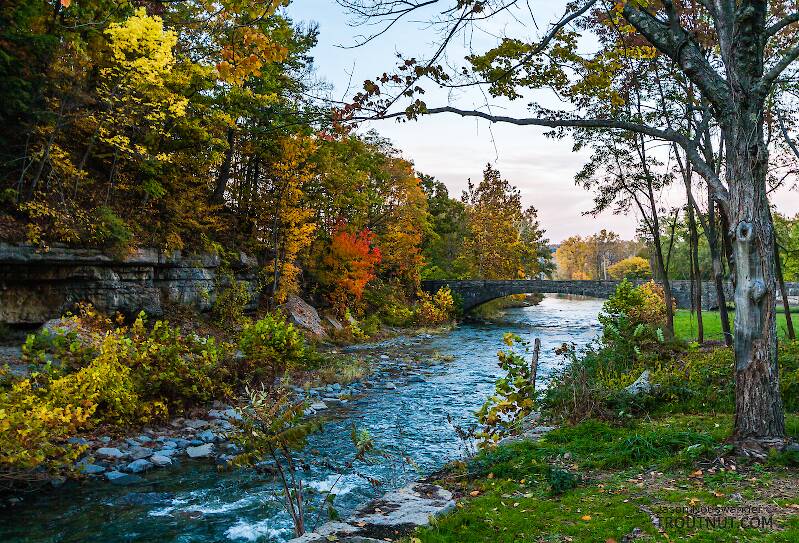
Salmonflies
Pteronarcys californica
The giant Salmonflies of the Western mountains are legendary for their proclivity to elicit consistent dry-fly action and ferocious strikes.

— 4 small yellow spots on frons visible in photos
— Narrow occipital spinule row curves forward (but doesn’t quite meet on stem of ecdysial suture, as it's supposed to in this species)
— Short spinules on anterior margin of front legs
— Short rposterior row of blunt spinules on abdominal tergae, rather than elongated spinules dorsally
I caught several of these mature nymphs in the fishless, tiny headwaters of a creek high in the Wenatchee Mountains.

Male Ecdyonurus criddlei (Little Slate-Winged Dun) Mayfly Spinner Pictures
This one was very puzzling to identify. It's clearly Heptageniidae. It keys pretty easily to couplet 58 in Merritt, Cummins, & Berg 5th Edition, but that's where things get tricky.
58: Male penes distinctly L-shaped; Segment 1 of foretarsi usually 1/3 to 2/3 the length of segment 2
58': Males penes not distinctly L-shaped; Segment 1 of foretarsi usually 1/5 to 1/2 the length of segment 2
The characteristics conflict here, as I'd say the penes ARE L-shaped, but the fore tarsal ratio is less than 1/3. Maybe the weasel word "usually" allows for that, and it's some kind of Stenonema, for which I'm not aware of any records in Montana, let alone western Montana.
Going by the tarsal ratio and assuming it's not Stenonema, everything in couplet 60 points to Afghanurus: contiguous compound eyes, genitalia similar to fig 13.222 in MC&B, and weakly developed basal costal crossveins in the forewings. But I looked up the original descriptions of the three Afghanurus species, and the body sizes (flowersi 5-7 mm, inconspicua 4 mm, joernensis 6-7 mm) are way below this one's 10 mm.
This led me to notice that the closely related Ecdyonurus is not included in the key at all, so I checked the descriptions of those species and found that Ecdyonurus criddlei fits very well: the color of the legs, the markings on the tergites and sternites, the short fore tarsus and ratios of the segments, etc. It was originally described as 7 mm, smaller than the 10 mm body of this specimen, but synonyms have been described with larger sizes including wing lengths up to 11 mm for females for Heptagenia salvini.
This specimen was found with a female nearby, which I think is probably the same species, although it is difficult to be certain.
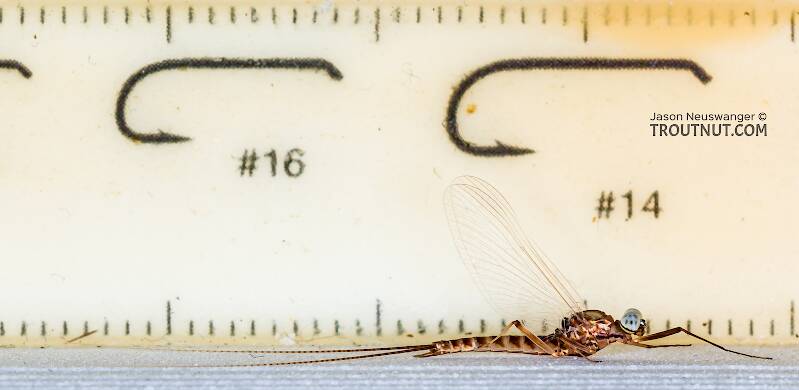
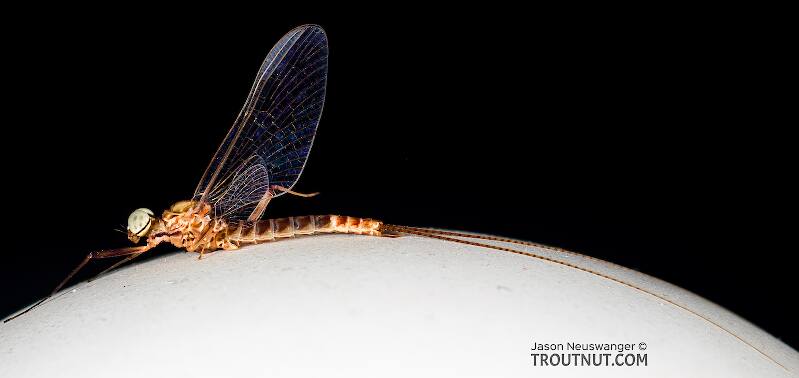


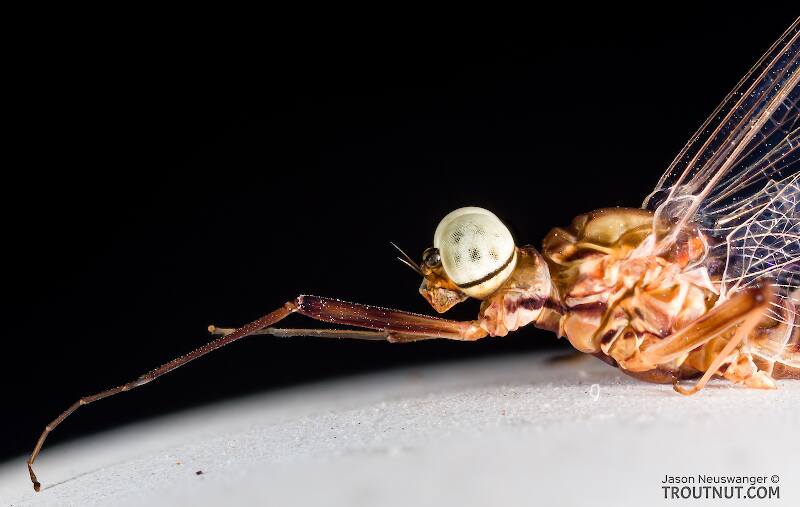
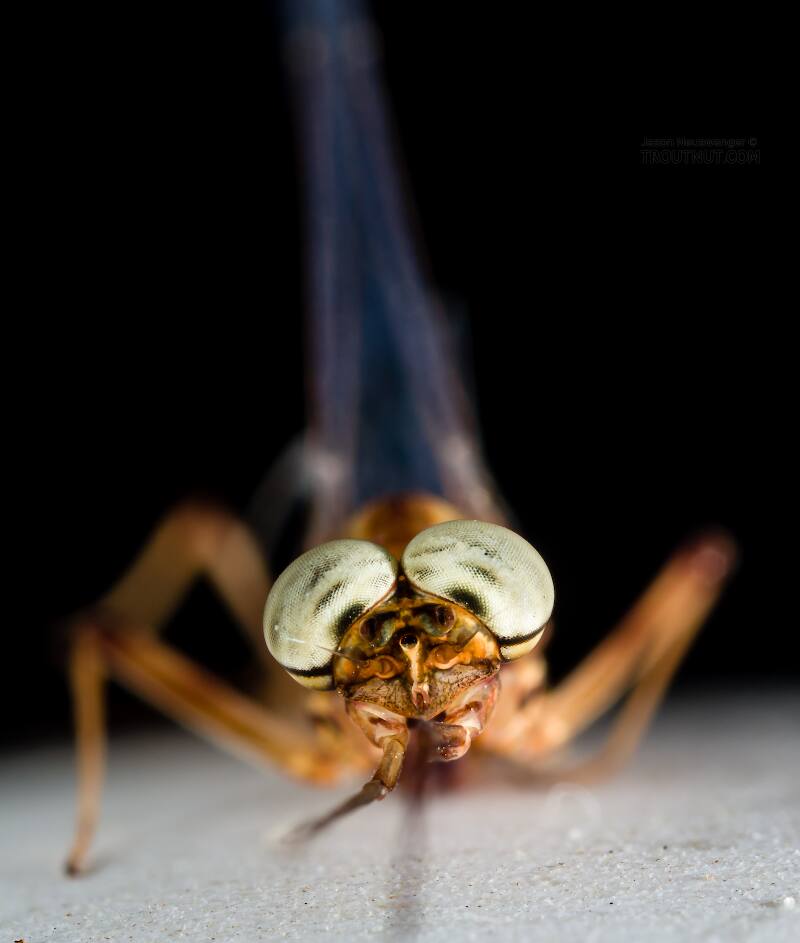
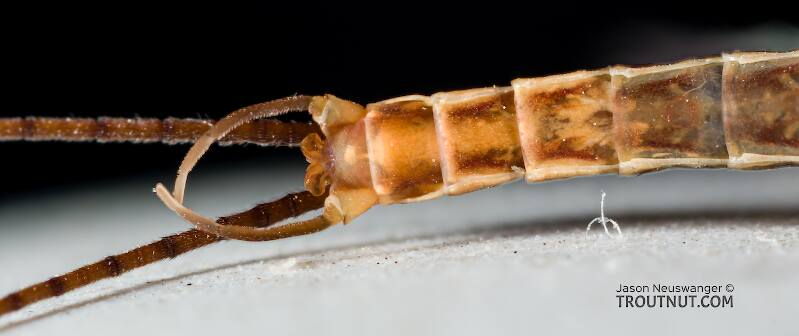
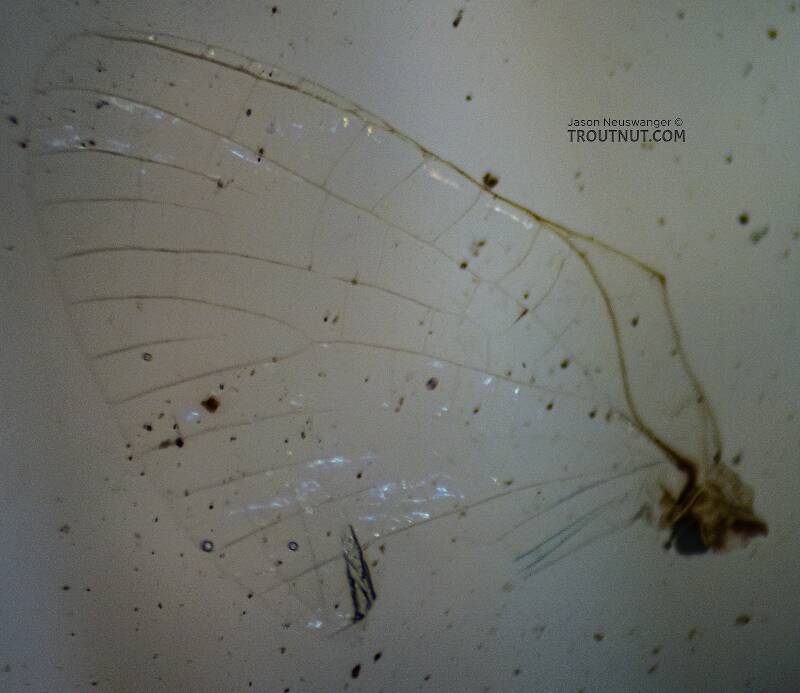
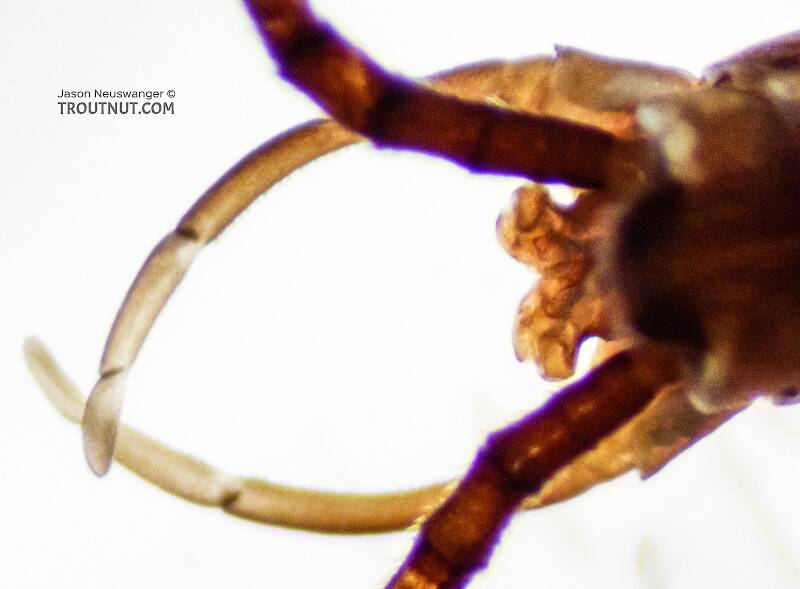
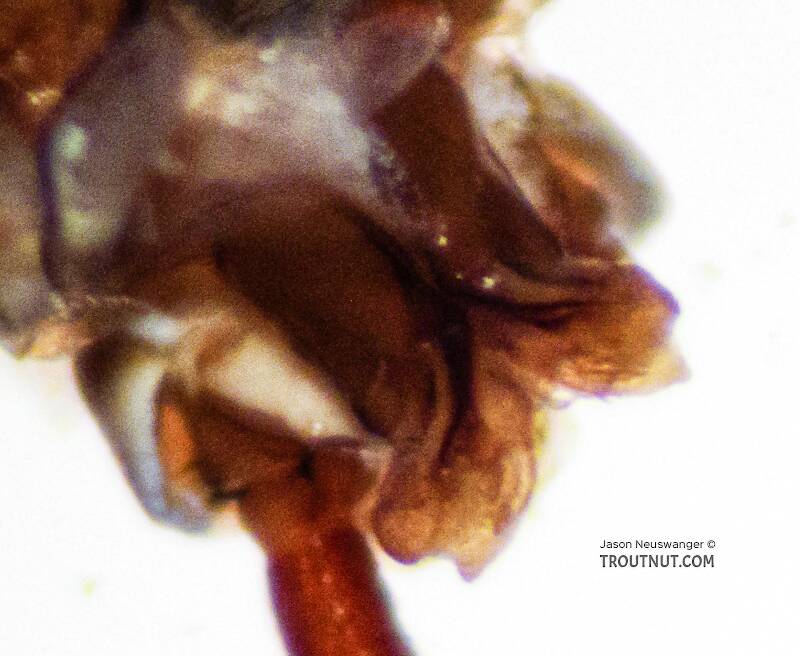
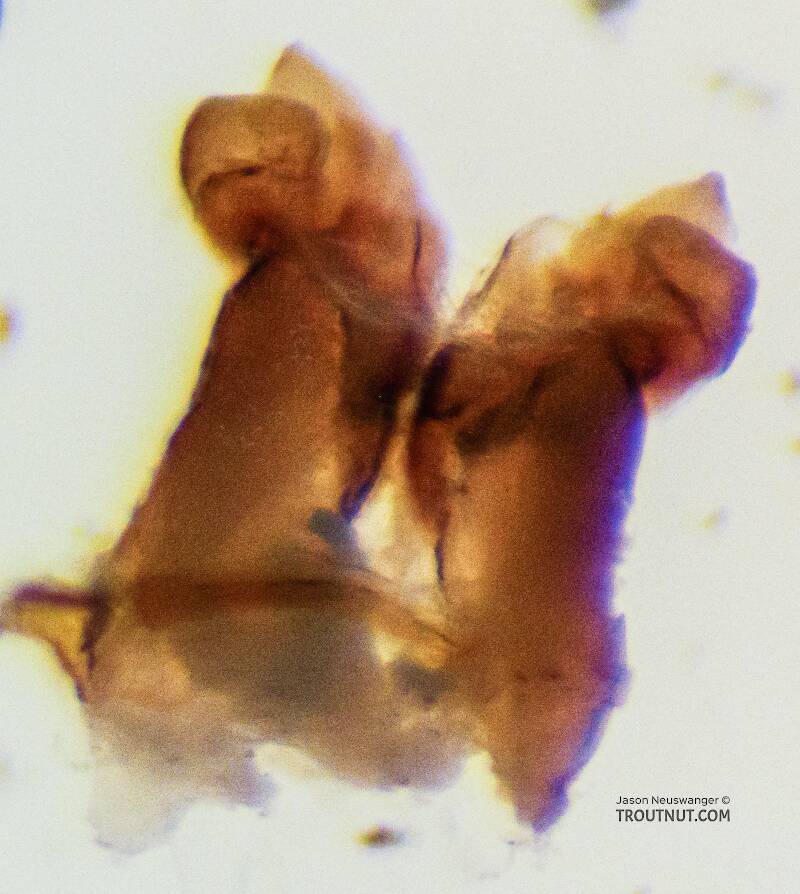
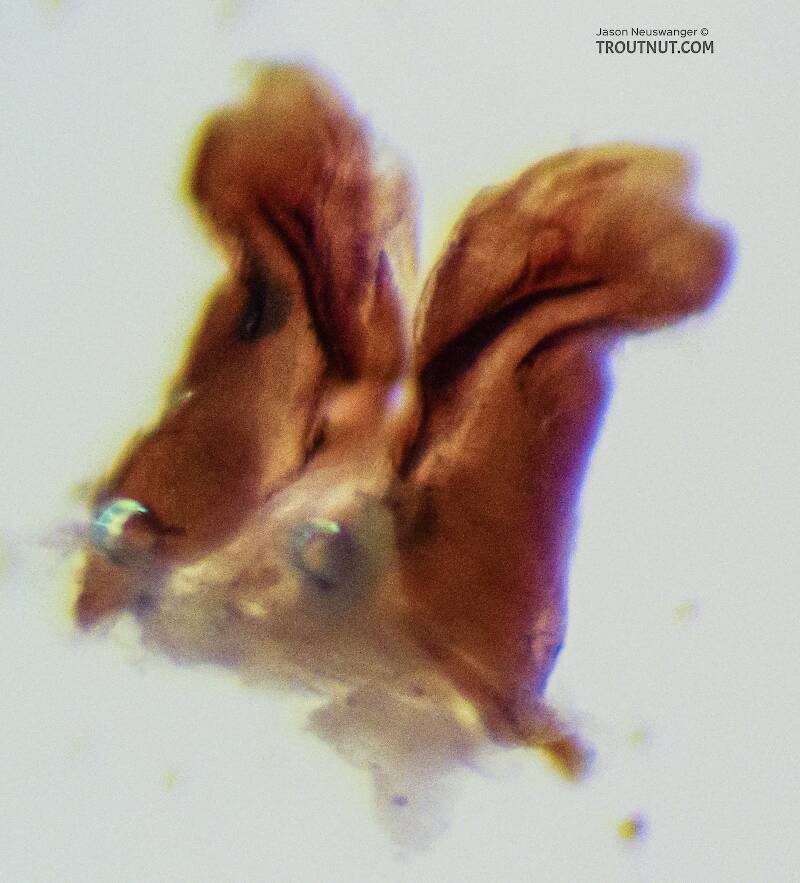
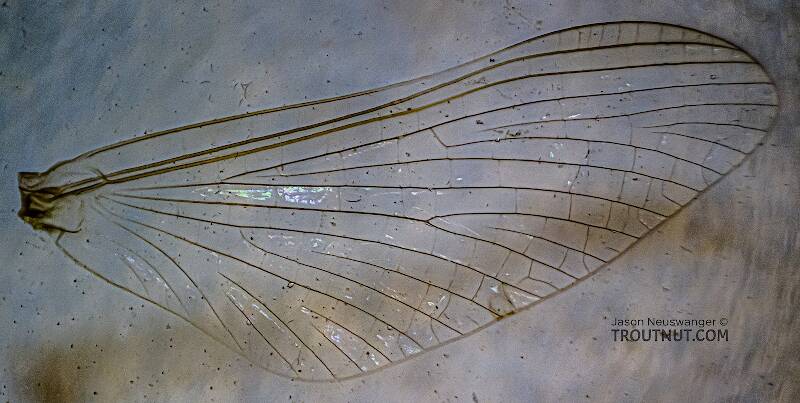
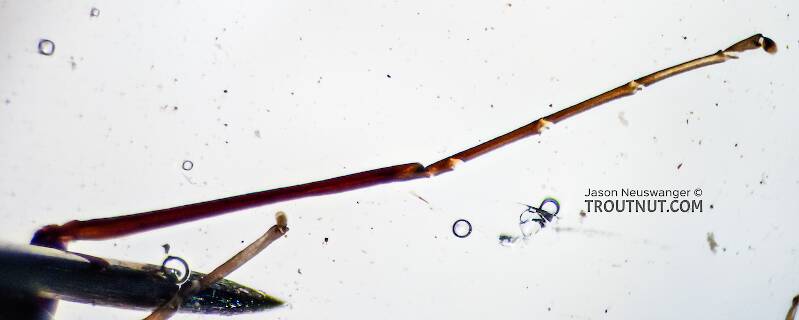
This mayfly was collected from the Bitterroot River in Montana on September 6th, 2021 and added to Troutnut.com by Troutnut on September 8th, 2021.
Start a Discussion of Spinner
Male Ecdyonurus criddlei (Little Slate-Winged Dun) Mayfly Spinner Pictures
Collection details
Date: September 6th, 2021
Added to site: September 8th, 2021
Author: Troutnut

